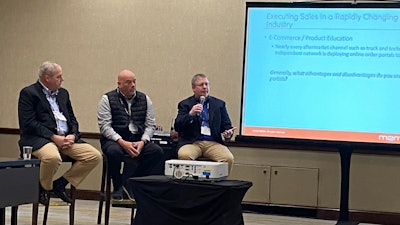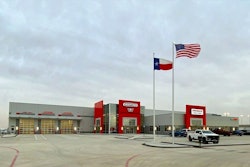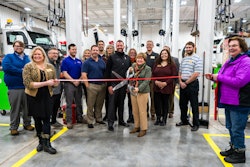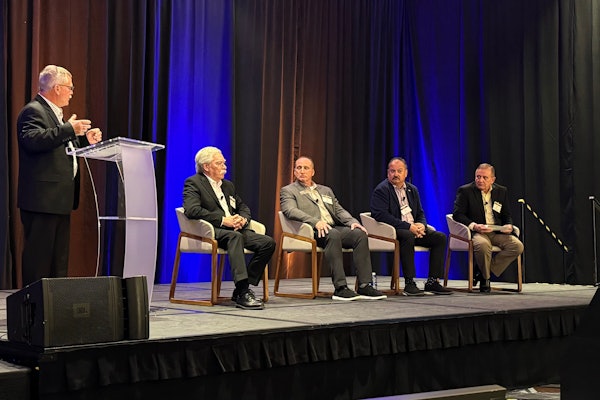
Accepting and leveraging technology was the topic of conversation at “Chasing the Aftermarket,” a MEMA event addressing executing sales in a rapidly changing industry held Sunday at the Gaylord Texan in Grapevine, Texas, in advance of Heavy Duty Aftermarket Dialogue and Heavy Duty Aftermarket Week (HDAW).
During the 30-minute speed panel discussion, representatives from Phillips & Temro, Velvac and Horton shared how their businesses are addressing some of the largest challenges they see for parts manufacturers in today’s business climate, as well as how they work with their internal and external sales partners to maximize the customer service they’re able to provide to independent aftermarket and dealer customers.
Technology dominated the discussion, with each panelist urging the other suppliers and sales representatives in attendance to not shy away from new resources that can bolster their go-to-market strategy.
Business intelligence tool Power BI received a hearty recommendation from all three panelists.
[RELATED: TPS special report: Suppliers working to reduce inflation, solidify supply chain]
Horton’s Ken Brandt said Power BI gives sales reps a tool that can help them see how they can positively impact key performance indicators (KPIs). By using Power BI, Brandt said reps supporting the Horton brand can see everything their customers are (and are not) buying and can use that information to inform in-person sales calls or digital messages.
“You can ask them why they aren’t buying something,” he said.
Velvac’s Randy McBride agreed. He said Velvac has started sending gap analysis reports to all of its sales reps (internal and agency partners) so they can develop better sales call strategies. McBride said Velvac still enables salespeople to use the reports “however they want to use it,” but said just providing the information enables sales representatives to bring vital context into sales meetings.
Online catalogs also earned strong support from the panelists. Ian Vriese with Phillips & Temro said his company used to print 150,000 catalogs a year and “now we print zero.” Vriese said Phillips & Temro likes e-catalogs and online libraries because they can direct customers to exactly what they need with the click of a button. He gave the example of QR codes provided with products that connect customers with installation instructions.
Vriese said these codes not only provide the same materials that would previously be found on printed documents, they also can be complimented with other relevant information. The customer is provided immediate access to far more information than he had before, and for a fraction of the cost that printing required.
And the latter shouldn’t be overlooked. Brandt said dropping printing costs for documents that can easily be found online is a great way to reduce budget pressures.
Yet McBride also noted, and the other panelists agreed, that totally dropping all printed marketing materials is not always a great idea. Sending customers directly to a page about a product is a great way to educate them about that component, but it doesn’t expose them to many other lines. He said a printed catalog can still elicit new sales opportunities when a customer says, “I didn’t know you had that,” McBride said.
[RELATED: TPS special report: Aftermarket battling fading margins, demand entering 2024]
The panelists also mention technology is only valuable if it’s used. A sales team unaccepting of technological investments costs its company money — both in the cost of the service and the lost sales from not using it. On the latter, McBride earned a hearty applause from the audience when he suggested manufacturers should increase commission for salespeople who use technology, thus forcing their adoption.
Sunday’s session also briefly touched on consolidation occurring throughout the aftermarket and dealer channels. All three panelists were in agreement that as dealer and independent businesses become larger, it is even more important to have sales teams in the field who have relationships everywhere so that if a customer’s leadership team changes, the supplier still has a relationship with the new executives.










